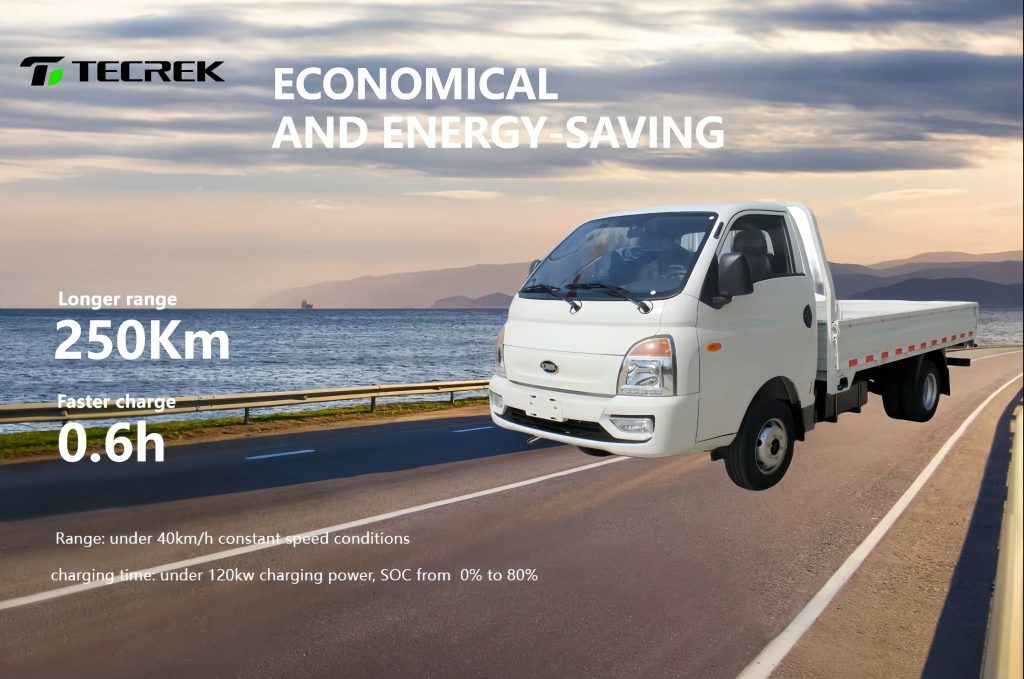5-Volt Solid-State Battery Emergence signals a major inflection point in energy storage technology for veicoli elettrici (EV). As vehicle makers and battery developers race to overcome the limitations of traditional lithium-ion cells, this high-voltage solid electrolyte architecture promises higher energy density, faster charging, improved safety, and new performance thresholds. From di Tairui vantage, understanding how the 5-Volt innovation shapes vehicle design, supply chain readiness, and global market competitiveness is essential.

1. Why the 5-Volt Solid-State Battery Emergence Matters
1.1 Putting high voltage into context
Conventional lithium-ion batteries typically operate at nominal voltages of around 3.6-4.2 V per cell. The move toward 5-Volt solid-state battery architectures expands the electrochemical window, enabling significantly greater energy storage per volume or mass — a step toward next-gen vehicles. The higher voltage also means fewer cells are needed for a given pack capacity, reducing system complexity and weight.
1.2 Performance, safety and sustainability gains
Beyond energy density, the “solid-state” descriptor signifies the use of solid electrolytes rather than liquid ones — which can mitigate fire risk, improve cycle life, and reduce degradation. With 5-Volt solid-state battery emergence, EV can hope to achieve longer range, faster charging, and greater resilience in harsh environments. For a company like Tairui, integrating such advanced power cell technologies means their future vehicle platforms can deliver more confidence, especially for heavy-duty or extreme-environment applications.
2. Technological Pathways and Industry Progress
2.1 Multiple material routes
The development of high-voltage solid-state batteries involves several technological innovations — high-nickel or lithium-metal anodes, novel cathodes that tolerate 5 V+, robust solid electrolytes (oxides, sulfides, halides, polymers), and optimized interfaces. Industry observers note that while many firms announce milestones, mass-scale deployment remains constrained.
2.2 Commercialization timeline and market implications
Despite the buzz around 5-Volt solid-state battery emergence, industry analysts caution that commercialization is still being matured. The infrastructure, manufacturing scale-up, supply chain for novel materials, and cost reduction all need to align. Many believe we are in a “multi-track” phase: semi-solid derivatives now, full solid-state later. Tairui is designing vehicle architectures now with future compatibility in mind — ensuring that the platform can support these new cells when they arrive, not too far down the road.
3. What This Means for Vehicle Makers and Mobility Ecosystems
3.1 Platform and system readiness
Per Tairui, the arrival of a new battery paradigm means more than just swapping cells — it requires thermal management upgrades, mechanical integration (fewer modules, higher voltage wiring), advanced battery management systems (BMS), and software to handle new behavior. The “EV battery breakthrough” of 5 Volt solid-state forms an opportunity for differentiation in performance, but only if engineered holistically.
3.2 Supply chain and materials strategy
The “next-gen solid-state cell” route demands new materials (lithium metal, exotic solid electrolytes), new manufacturing tools, and robust quality assurance. Vehicle companies must engage upstream to secure supply and maintain cost discipline. di Tairui strategic roadmap includes partnerships in the battery value chain, enabling smoother adoption and mitigating risk.
3.3 Market differentiation and consumer promise
From a branding standpoint, a vehicle platform designed around a 5-Volt solid-state battery emergence story can offer higher range, faster charge, lighter weight, and perhaps even new safety or performance credentials. For fleets, this means longer duty cycles; for private buyers, fewer range-anxiety concerns. Tairui uses this future-ready narrative to position its innovations as leading-edge mobility solutions.
4. Challenges and Critical Considerations
4.1 Manufacturing scale and cost barriers
While breakthroughs are exciting, industry insiders note that solid-state commercialization still faces “short-term bottlenecks” — cost per kilowatt-hour, manufacturing yield, large-format reliability and new equipment investment. Tairui recognizes this and is aligning its product roadmap so that current platforms can support existing cells while being upgradable.
4.2 Reliability, cycle life and safety validation
High-voltage packs mean greater stress on materials and interfaces. Interface impedance, lithium-metal dendrite control, sealing and long-term durability are all non-trivial. Analysts warn about “waiting for the perfect battery” syndrome. Vehicle makers like Tairui are conducting rigorous evaluation under real-world conditions to ensure new cell technologies meet heavy-duty and commercial-vehicle demands, not just passenger car benchmarks.
4.3 Ecosystem and infrastructure compatibility
High-voltage systems may require upgraded chargers, wiring standards, vehicle communication and service infrastructure. The “EV buying guide” for fleets and operators will evolve accordingly. Tairui’s global engineering teams factor in charging interoperability, service networks and upgrade paths to support the shift.
5. Strategic Roadmap: How Tairui Is Preparing
5.1 Engineering for future flexibility
Tairui is developing vehicle platforms that support 800 V+ architectures, modular battery racks, and wiring harnesses suitable for high-voltage integration. This ensures that once 5-Volt solid-state battery systems are commercially ready, our vehicles can be upgraded without full redesign, protecting investment and enabling faster market introduction.
5.2 Strategic collaborations and co-development
Tairui actively works with battery developers, materials suppliers and system integrators to access high-voltage cell knowledge. These partnerships reduce risk and accelerate readiness for the 5-Volt solid-state battery emergence moment.
5.3 Communicating next-stage advantage
Tairui emphasizes that today’s vehicle buyer should look for platforms that are “future-proof”, not just current spec. By aligning our offer with next-generation batteries, we signal that our vehicles will remain relevant, not obsolete, enabling longer ownership cycles and better value retention.
Conclusione
In sum, the 5-Volt Solid-State Battery Emergence is more than a technical milestone — it heralds a transformative phase for mobilità elettrica. With higher energy density, faster charge, improved safety and lighter systems, this battery architecture promises to reshape fleets, vehicles, infrastructure and user expectations. For Tairui, embracing this evolution means engineering flexibility, supply-chain integration, and a forward-looking brand narrative.
As the world moves into the next decade of electrification, the question for many isn’t just “When will I buy an EV?” but “Will that EV be ready for the next battery revolution?” At Tairui, we answer: yes — we’re designing today for the innovation of tomorrow.
